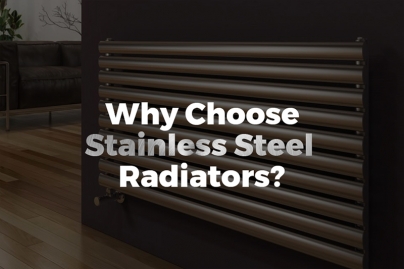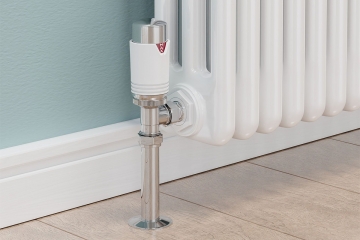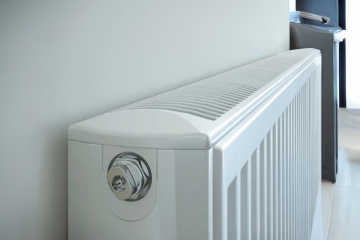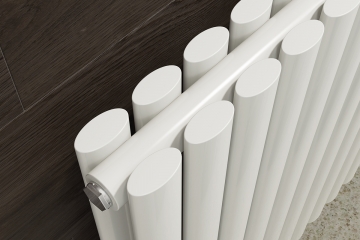Why Choose Stainless Steel Radiators?

Why Choose Stainless Steel Radiators?
Stainless steel has been one of the most popular materials in radiator construction since its invention a century ago. There are more than 150 stainless steel grades so it's important to ensure that you've chosen a radiator constructed from high-quality metal but the best quality models are some of the sturdiest and most reliable on the market. With its excellent energy efficiency and durability, it's easy to see why the metal has remained so popular for so long.
In order to be graded as stainless steel, the metal compound must be at least 10.5% chromium. This chromium content creates a protective layer that prevents the metal reacting with oxygen and forming rust. Though the material isn't 100% non-corrosive, it's far corrosive than other popular metals, thus enjoying a longer lifespan. This is especially useful in bathrooms, where radiators are constantly exposed to humidity and often used to dry towels. Where mild steel might be damaged by this prolonged exposure, the protective qualities of stainless steel mean it can easily endure the moisture.
Why is it Used in Heating?
An excellent conductor of heat, stainless steel radiators take longer to cool down than their aluminium equivalent, meaning they will continue to warm a room even after the heating system has been switched off. During the winter months when your radiators will be on regularly, this can be a great benefit as even a small reduction in the amount of time your central heating is active can lead to significant savings on your energy bills.
Stainless steel has a naturally attractive appearance as a result of its chromium content and, as the name implies, it's easy to clean with an occasional wipe down. While repeated cleaning might damage other radiators, this isn't an issue with stainless steel, making it an ideal choice for areas where hygiene is a priority, such as hospitals and laboratories. Minor variations in the casting process can have a major impact on the steel's finish, for example adding a coloured tint that avoids the need for painting after the fact.
The ease with which steel can be welded has long made it a logical choice for plumbing and its recyclability makes it an environmentally friendly option. It's said that more than half of the stainless steel radiators on the market are made from recycled steel and they can also be reused when they're no longer needed.
While it's very rare, certain steel compounds can adversely affect some people due to its nickel content causing minor allergic reactions. In general, this is unlikely to affect you but it's something worth checking before purchasing a new radiator.
Due to the expenses involved in its manufacture and the quality associated with the material, stainless steel radiators are some of the most expensive on the market. They remain the most luxurious choice and their unmistakable appearance draws attention in any room if you want your radiator to make a strong statement. For a combination of striking looks, efficient heating and extreme durability, consider a radiator made from stainless steel.
Related Posts
Understanding how TRVs actually function can save you a fair chunk of money on heating bills whilst making your home more comfortable. They're cleverer than they look, and once you know what you're doing with them, they pretty much run themselves.
Your heating's on, but some rooms are tropical while others feel like winter? The culprit is most likely unbalanced radiators. Let's take a closer look.
When you're replacing radiators or fitting new ones, you'll quickly hit this question: single or double panel? Let's sort out which you actually need.




